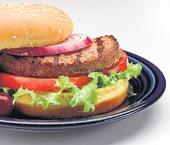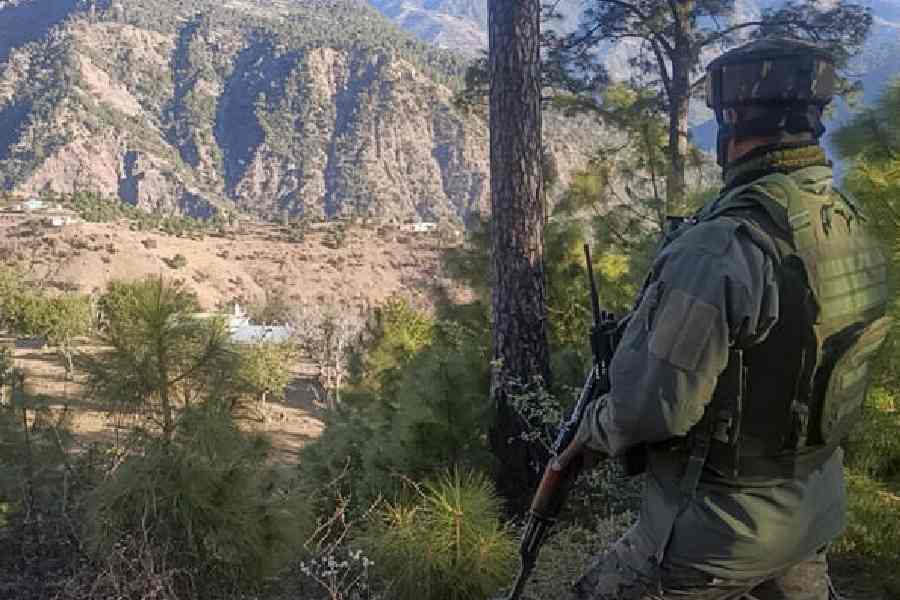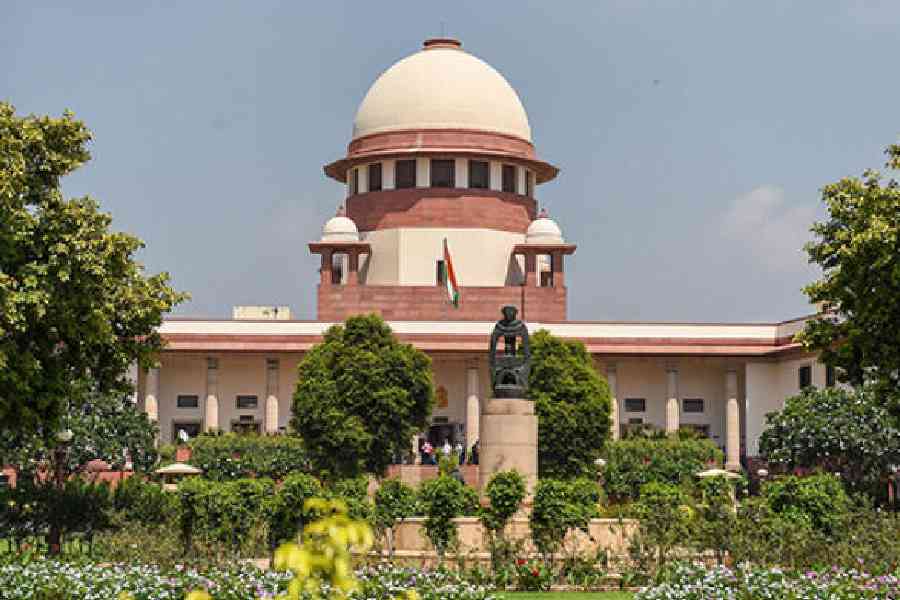 |
If you’re feeling guilty about all the cutlets and mutton chops you’ve gorged on while pandal hopping during the Pujas — don’t. You have company among legions of Calcuttans who are overdosing on junk food every day. From samosas to chicken rolls, from burgers to pizzas, from chips to chaat — snacks seem to rule the lives of the average Calcuttan who’s always willing to tuck into a mouth-watering tidbit or two.
Or so says a nationwide A.C. Nielsen survey that has found that the incidence of snacking among women and children is the highest in Calcutta. The study, titled “Understanding Snacking among Women and Children”, surveyed 200 respondents each in Delhi, Calcutta, Mumbai, Chennai and Bangalore and found that Calcutta topped the chart with as much as 99 per cent of its women and children indulging in pre-dinner snacking. Bangalore came a close second, with 95 per cent gorging on snacks during the same pre-dinner period.
Calcutta, always known to be the city of gourmets, seems to have crossed a fine line and become a city of gourmands who binge on tasty, but decidedly unhealthy snacks.
 |
Take Vijaya Ray, a chartered accountant, who admits that she is passionately fond of snacks. Her fave fix? Kati rolls from Nizam. “Eating hot kati rolls at Nizam is possibly the closest you can get to consuming manna from heaven,” she says ecstatically. Ray likes to take Nizam’s kababs and rolls home so she and her family can sit together and munch on them over a cup of tea or coffee in the evening. “It makes for a sense of bonding over food,” she says.
Or take Reba Mitra, a school teacher, who loves to take her nine-year-old son out for snacks. “I believe that eating out is great fun and I take my child out for snacks as much as possible,” she says. Mitra says that one reason she snacks regularly is that they are fairly cheap in Calcutta. “Both me and my son love to eat chops and cutlets in the evenings.” So what makes people like Mitra and Ray — and countless others in Calcutta’s multi-community melting pot — so keen to indulge in serial snacking? And, more crucially, what makes the city such a clear winner in the snacking stakes, so much so that it scores over metros like Delhi or Mumbai — which also has its enthusiastic hordes of junk food addicts? For though the survey talks only of women and children, one can safely assume that the city’s men too are not far behind in feasting on deep-fried, cholesterol-rich snacks at all odd hours.
Dietician Doel Bishnu Roy feels that one reason the incidence of snacking is so high in Calcutta is that the city has always had a rich tradition of snacking. Add to that the proliferation of eating outlets serving a wide range of tasty fast foods, and you have a city that’s fixated on regular snacking. Adds Bunny Gupta, author of the Calcutta Cookbook, “The modern day working woman in the city is having more snacks since she no longer has the time to cook at home. These women also give their children snacks to eat so they get used to these foods from a very young age.”
But if Calcutta has indeed become the snack capital of India, tradition certainly has something to do with it. The jalkhabar, or a selection of savouries to be had with tea, was usually quite an elaborate affair in well-to-do Bengali households of yore. The lady of the house had a stunning array of delicacies to choose from to go with the evening tea — luchi, parota, kochuri, singara, nimki, chirer pulao, the typically Bengali “chop” (with fillings ranging from potato, to eggs, to fish, to keema), cutlet — not to speak of a wide variety of fried sweets like gauja, malpoa, halwa, etc. To this treasure trove of indigenous snacks was added the vast variety of lip-smacking snacky foods brought by each and every community that settled here. So, from the tangy Gujarati dhokla to the dripping-with-ghee Marwari kachori, from south Indian dosas to north Indian kebabs — the Calcuttan has seen the city’s repertoire of snacks swell over time.
Thus, in a sense, snacking is hardwired into the city’s genes. And Calcuttans — Bengalis, Marwaris, Sindhis, Gujaratis and everybody else — are being faithful to that and tucking in like never before. The city’s snack joints and eateries affirm the trend. “We have customers eating all kinds of snacks — starting from south Indian idli-dosas to north Indian chhole bhaturas, kochoris and chaats” says Umed Agarwal, general manager of Haldiram in Calcutta. In fact, Haldiram claims that its fast food is so popular that it had a footfall of 10,000 at its branches on the four days during the Pujas.
If Haldiram is more north Indian and multi-cuisine, a quintessentially Bengali eatery and sweet shop like K.C. Das too has seen a steady rise in people coming in for a snacky bite. “We have registered a growth of almost 15% in our business over the past four years,' says Dhiman Das, director of K.C. Das. Here you will find innovations like vegetarian soya roll and paneer capsicum chops rubbing shoulders with old Bengali favourites such as the singara and Radhaballabhi. “Around 50% of our customers are non-Bengali and the peak time for people coming in for snacks is between 4 and 7 pm,” says Das.
Indeed, open any new food outlet with the promise of tasty, chatpata food, and the Calcuttan is there with his (or her) hair in a braid. Whether it is Pizza Hut or Kentucky Fried Chicken, McDonalds or the infinitely more humble corner shop that sells those aromatic anda chicken rolls, a lengthy queue will form and snackers will lap up what’s on offer. Gopal Munda, unit manager of KFC, Calcutta, agrees. “Business is booming,” he says.
Of course, as it is in other Indian metros, the main reason for the rise in junk food intake in Calcutta is simply that people do not have the time or the energy to cook food at home. “We eat snacks very often since as a working woman I stay out for long hours and do not get the time to cook,” says Anuradha Mukherjee, a railway employee. She adds — and nutritionists would be horrified at this — that “snacks like kachori and samosas are quite filling and can double as dinner for the entire family.”
Most snackers do have a fine disregard for the health hazards of eating such foods. “People tend to become obese with unscheduled eating and excessive consumption of oily food,” says dietician Bishnu Roy. “One’s cholesterol levels are likely to go up with excessive intake of junk food,” adds Dr Amulya Bhusan Ray, former professor of Medicine at RG Kar Hospital.
But while Calcutta’s snackers chomp into cholesterol-heavy foods, there are still some people in the city who swear by the magic of simpler, home-made fare. Magician P.C. Sorcar, for instance would rather have a simple snack of a mixture of puffed rice, chanachur with nuts thrown in than indulge in the heavy snacks that are hot favourites today. “Even the humble papad eaten with tea is a big hit in our family,” he reveals. Author Shirshendu Mukhopadhyay too recalls that in his youth even a spartan snack of korai and chirey was satisfying. “The whole concept of chayer songe ta is that there is a light dish to go along with a cup of tea,” he says.
Well, not anymore. Calcuttans have made snacks into a whole new food story. Cholesterol be damned!










